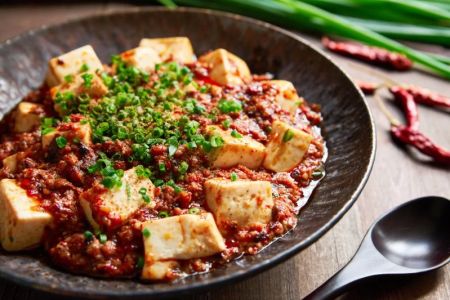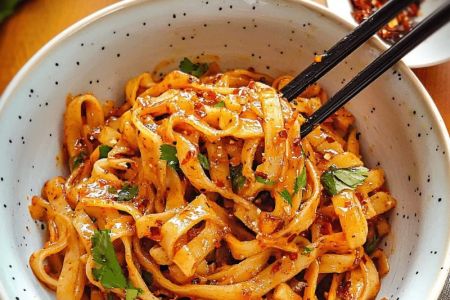- 1. The Rise of Chinese Tea Culture in American Restaurants
- 2. The Impact of Chinese Tea Culture on American Dining
- 3. Popular Chinese Teas Found in American Restaurants
- 4. How to Integrate Chinese Tea Culture into Your Dining Experience
- 5. Why American Restaurants Are Embracing Chinese Tea Culture
- 6. Recommendations for Exploring Chinese Tea in Restaurants
1. The Rise of Chinese Tea Culture in American Restaurants
Over the past few decades, Chinese tea culture has begun to make its mark on the culinary world, particularly in American restaurants. As dining experiences evolve and consumers increasingly seek more diverse and authentic offerings, Chinese tea has gained popularity for its complexity, rich history, and health benefits. For many years, tea was primarily associated with English or American traditions, but Chinese tea culture has started to thrive in a way that is transforming the way tea is consumed in restaurants across the United States.
Whether it’s through the offering of premium teas, tea pairings with dishes, or special tea ceremonies, American restaurants are increasingly embracing Chinese tea culture. From upscale restaurants to casual eateries, tea is no longer seen as an afterthought or a simple beverage, but rather as an integral part of the dining experience. This shift is reshaping how Americans appreciate and enjoy tea, highlighting its cultural significance and versatility. In this article, we will explore how Chinese tea culture has influenced American restaurants and provide tips for integrating it into your dining experience.
2. The Impact of Chinese Tea Culture on American Dining
The influence of Chinese tea culture on American dining extends beyond the mere addition of tea to the menu. It represents a broader cultural shift in how we approach food and beverages. In Chinese culture, tea is more than just a drink—it’s an art form, a tradition, and a social experience. American restaurants are beginning to incorporate these elements into their dining concepts, offering a more refined and immersive experience for guests.
1. Elevation of the Dining Experience: In many American restaurants, Chinese tea culture is used to elevate the overall dining experience. High-end restaurants often offer a variety of premium Chinese teas such as Oolong, Pu-erh, and Jasmine, pairing them with carefully crafted dishes that complement the flavors of the tea. This approach creates a multi-sensory dining experience that appeals to guests seeking something beyond the traditional wine pairing.
2. The Art of Tea Brewing: One of the most significant aspects of Chinese tea culture is the way tea is brewed. Instead of simply steeping a tea bag, many American restaurants now feature elaborate tea brewing methods, such as Gongfu tea ceremonies, where loose-leaf tea is brewed in small clay teapots, allowing for multiple infusions. This adds an element of craftsmanship and ritual to the dining experience, giving guests the opportunity to appreciate the complexity of the tea and the skill involved in preparing it.
3. Popular Chinese Teas Found in American Restaurants
As Chinese tea culture continues to grow in popularity in the U.S., a variety of teas have made their way into restaurant menus. Here are some of the most popular Chinese teas you can find in American restaurants:
1. Green Tea: Chinese green tea is known for its delicate flavor and numerous health benefits. Popular varieties like Longjing (Dragon Well) and Bi Luo Chun are often featured in restaurants. Green tea is often served both hot and cold, and it’s commonly paired with lighter dishes like sushi or seafood.
2. Oolong Tea: Oolong tea falls somewhere between green and black tea, offering a range of flavors from light and floral to deep and roasted. In American restaurants, Oolong tea is often served with flavorful dishes like dim sum or grilled meats. The versatility of Oolong makes it a popular choice for pairing with a variety of cuisines.
3. Pu-erh Tea: Pu-erh is a fermented tea that’s known for its earthy and robust flavor. This tea is typically served after meals, as it is believed to aid in digestion. It is especially popular in Chinese restaurants and is increasingly being introduced to other American dining establishments as a post-meal option.
4. Jasmine Tea: Known for its fragrant aroma, Jasmine tea is a favorite among tea enthusiasts. The tea leaves are scented with jasmine flowers, creating a sweet and fragrant beverage. It is often served in American restaurants alongside lighter dishes or desserts, providing a refreshing and aromatic option for diners.
4. How to Integrate Chinese Tea Culture into Your Dining Experience
Integrating Chinese tea culture into your dining experience can be both enjoyable and enlightening. Here are a few ways to enhance your meal with tea:
1. Tea Pairing with Food: Similar to wine pairing, Chinese tea can be paired with specific foods to enhance the flavors of both the tea and the dish. For example, the subtle flavors of green tea can complement light appetizers such as spring rolls, while the rich, earthy tones of Pu-erh tea pair well with heavier meats like duck or pork.
2. Participate in a Tea Ceremony: Many Chinese restaurants now offer tea ceremonies where tea is brewed in small teapots using the Gongfu method. If the option is available, don’t hesitate to ask for a demonstration and participate in the ritual. It’s a great way to learn more about Chinese tea culture and appreciate the intricate process of tea preparation.
3. Try a Tea Flight: Some restaurants offer a “tea flight,” where guests can sample several types of tea in small servings. This allows you to explore different teas and discover which ones best complement your meal.
5. Why American Restaurants Are Embracing Chinese Tea Culture
There are several reasons why American restaurants are embracing Chinese tea culture. First and foremost, the popularity of tea, especially green tea, has surged due to its perceived health benefits. Chinese tea is rich in antioxidants, vitamins, and minerals, making it a popular choice for health-conscious diners. Furthermore, the art of tea brewing and the cultural significance of tea have attracted people who seek a more immersive dining experience.
Additionally, as global cuisine becomes more popular and diverse, many American restaurants are eager to offer authentic international experiences. Chinese tea culture, with its deep history and complex flavors, provides a perfect complement to the growing interest in Chinese cuisine.
6. Recommendations for Exploring Chinese Tea in Restaurants
If you’re interested in exploring Chinese tea in restaurants, here are some recommendations:
1. Visit Chinese Tea Houses: Many cities in the U.S. have Chinese tea houses that specialize in offering a wide variety of authentic Chinese teas. These establishments are perfect for immersing yourself in the full tea experience.
2. Look for Tea Pairing Menus: Many upscale restaurants now feature special tea pairing menus where you can enjoy a variety of Chinese teas with different courses. This is a great way to learn about the different types of tea and discover which flavors you enjoy most.
3. Check for Specialty Teas in Asian Fusion Restaurants: As Chinese tea culture continues to grow, even non-Chinese restaurants are offering specialty teas. Look for tea options on the menu, especially at Asian fusion or high-end restaurants, to get a taste of how Chinese tea is integrated into contemporary dining experiences.







